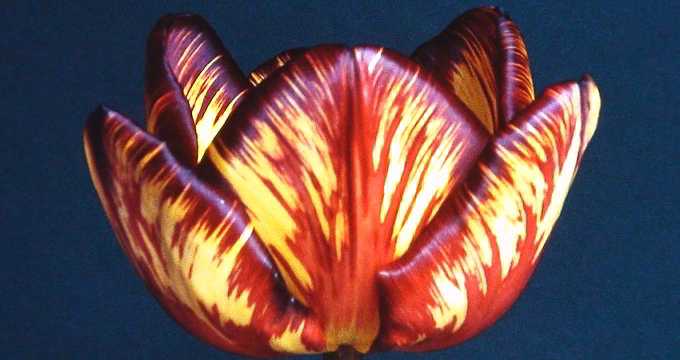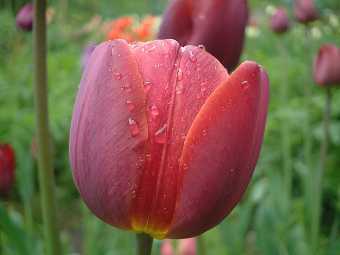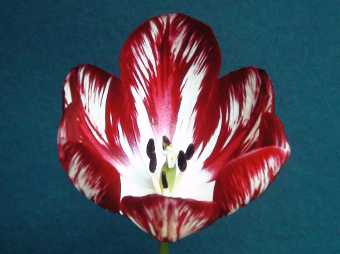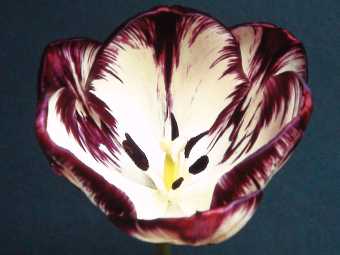Breeders, Flames & Feathers
The English Florists' Tulip is distinguished by flamed and feathered markings caused by Tulip Breaking Virus, highly valued during Tulipomania.
English Florists' Tulips had their peak of popularity in the early Nineteenth Century, with many florist's societies growing the tulip and other florist's flowers like the ranunculus, carnation, anemone and the auricula, when standards of what represented a good flower were first laid down.
 above Florists' tulip Dr Hardy Flame.
above Florists' tulip Dr Hardy Flame.
Since then the number of tulip societies has declined, and when the Royal National Tulip Society closed in 1936, our society held the last remaining tulip shows in Britain.
Florist's flowers and standards
T above Florists' tulip Lemuria breeder.
above Florists' tulip Lemuria breeder. above Florists' tulip Wakefield flamed.he English Florists' Tulip has to conform to certain strict standards, particularly in having a shape like half a hollow ball, and having a base colour cleanly white or yellow, on top of which the darker colour is overlaid.
above Florists' tulip Wakefield flamed.he English Florists' Tulip has to conform to certain strict standards, particularly in having a shape like half a hollow ball, and having a base colour cleanly white or yellow, on top of which the darker colour is overlaid.
The attractive markings on some of the flowers exhibited arise from infection with tulip breaking virus of the bulb from which the flower grows. The markings have been known about since the days of Tulipomania in the Seventeenth Century, when livelihoods were gambled on the values of individual bulbs. During the 1930's, Tulip Breaking Virus was discovered to be the cause.
The flowers do not seem to suffer from infection: one of the oldest cultivars known to us is Habit de Noce (Wedding Coat), dating from the 1790's, and still grown by Society members today.
 above Florists' Tulip Columbine feathered.
above Florists' Tulip Columbine feathered.
Breeder, flamed, feathered forms
Each variety can exist in three different forms:
Breeder Tulips are flowers unaffected by virus in which the base colour, either white or yellow, forms a base to petals of a solid colour.
Flamed Tulips have been affected by virus so that the petal colour intensifies into a central bar up the petal and flame-like markings around the edge of the petals.
A flower will be marked down if there are "skips" where the colour has missed, or if the markings are too heavy.
Feathered Tulips are less heavily marked and have no central bar, the edge being finely feathered with the body colour.